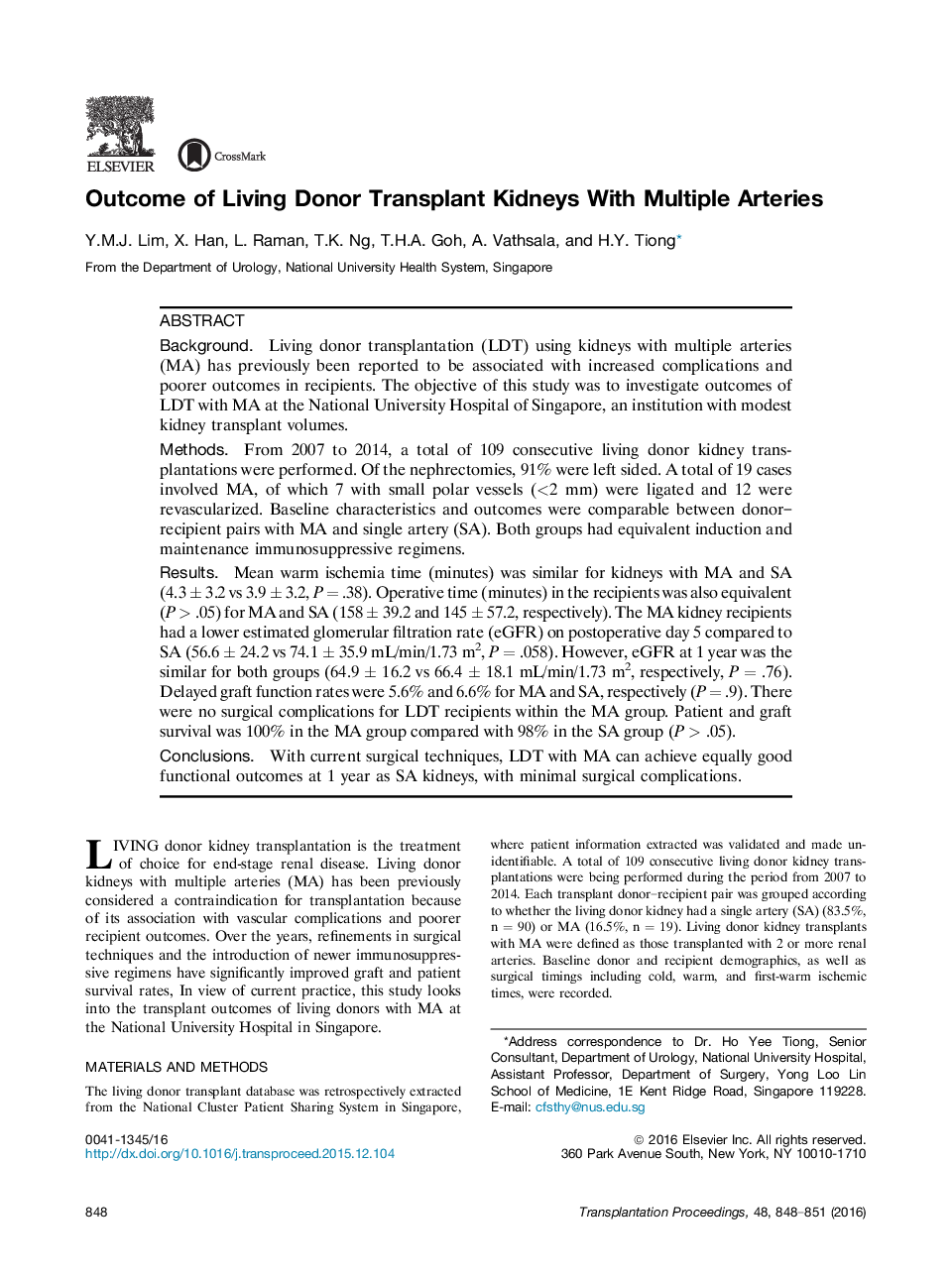| Article ID | Journal | Published Year | Pages | File Type |
|---|---|---|---|---|
| 6246422 | Transplantation Proceedings | 2016 | 4 Pages |
â¢Equivalent outcomes were achieved for kidney transplantation using living donor kidneys with multiple arteries and single arteries in an Asian transplant center with modest volumes.â¢These outcomes include mean estimated glomerular filtration rates at postoperative day 5 and at 1 year, delayed graft function, rejection, and survival rates.â¢Patient mortality and surgical complication rates were also examined.â¢Graft function for the multiple artery and single artery groups was similar at 1 year.â¢Living donor transplantation with multiple arteries can be performed with favorable outcomes.
BackgroundLiving donor transplantation (LDT) using kidneys with multiple arteries (MA) has previously been reported to be associated with increased complications and poorer outcomes in recipients. The objective of this study was to investigate outcomes of LDT with MA at the National University Hospital of Singapore, an institution with modest kidney transplant volumes.MethodsFrom 2007 to 2014, a total of 109 consecutive living donor kidney transplantations were performed. Of the nephrectomies, 91% were left sided. A total of 19 cases involved MA, of which 7 with small polar vessels (<2 mm) were ligated and 12 were revascularized. Baseline characteristics and outcomes were comparable between donor-recipient pairs with MA and single artery (SA). Both groups had equivalent induction and maintenance immunosuppressive regimens.ResultsMean warm ischemia time (minutes) was similar for kidneys with MA and SA (4.3 ± 3.2 vs 3.9 ± 3.2, P = .38). Operative time (minutes) in the recipients was also equivalent (P > .05) for MA and SA (158 ± 39.2 and 145 ± 57.2, respectively). The MA kidney recipients had a lower estimated glomerular filtration rate (eGFR) on postoperative day 5 compared to SA (56.6 ± 24.2 vs 74.1 ± 35.9 mL/min/1.73 m2, P = .058). However, eGFR at 1 year was the similar for both groups (64.9 ± 16.2 vs 66.4 ± 18.1 mL/min/1.73 m2, respectively, P = .76). Delayed graft function rates were 5.6% and 6.6% for MA and SA, respectively (P = .9). There were no surgical complications for LDT recipients within the MA group. Patient and graft survival was 100% in the MA group compared with 98% in the SA group (P > .05).ConclusionsWith current surgical techniques, LDT with MA can achieve equally good functional outcomes at 1 year as SA kidneys, with minimal surgical complications.
